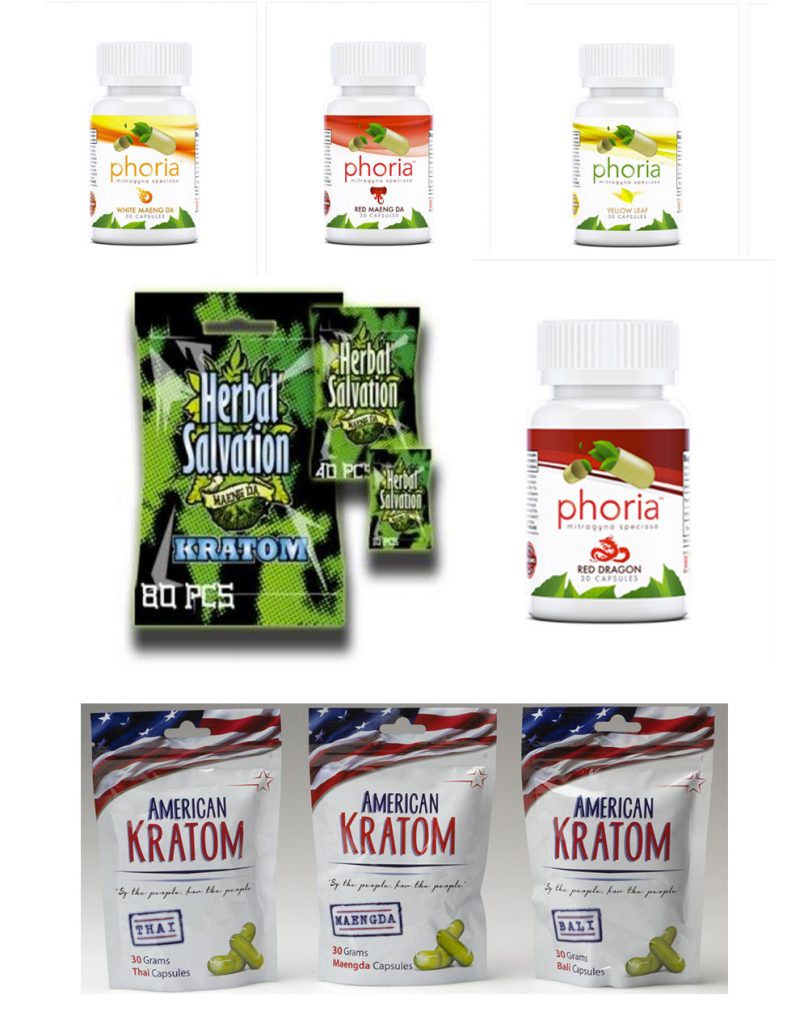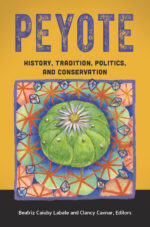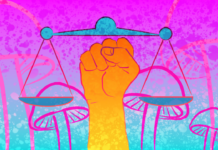- Understanding the Kratom Ban Controversy - March 13, 2017
Face-eating zombies, bulletproof criminals, and rampant death of all involved. These seem to be among the most common media stories floated around when discussing newly discovered or emerging drugs. There is a reason for this: sensationalized media seems to sell. As some media ebbs from respected journalism to the blogosphere, these reports may be occurring more frequently. Within criminology and sociology, there is even a term to describe such media events: “moral panic,” which is used to describe a media overreaction to a seemingly mundane, or at least exaggerated, event.1
Although available for hundreds of years in Southeast Asia, a plant called kratom has recently made its way to the United States. Initially exemplifying some elements of a moral panic from the media and drug regulators,2 enough interest from drug users and others have helped to pave a path for kratom that may end up being unique.
Regarding novel drugs, these stories seem to fit within one of three categories. The first category is when a truly new substance is discovered. This usually involves some new synthetic or so-called “designer drug” that hits the streets. Examples of this are plentiful: PCP, GHB, and MDMA (ecstasy). Historian Philip Jenkins even coined a term to discuss such a variant of moral panics: “synthetic panics”.3
The second category of story regarding novel drugs is when a drug that has been around for some time is simply rebranded as “new.” A recent example of this is “Molly,” which is simply a powder or crystalline form of MDMA. This formulation of MDMA was rebranded as new and pure when the only real novel part of the substance was the route of administration; MDMA is usually taken in pill form.4
A third category of story regarding novel drugs are older drugs that originate from different parts of the world that are simply new or novel to the United States (or any other country reporting such an occurrence). When in graduate school at the University of Florida, several fellow criminology graduate students (Bryan Miller, Dave Khey, John Stogner, and John Boman), and I began to document the legal status and use patterns of Salvia divinorum, a psychoactive plant from the mint family that is native to the state of Oaxaca in Mexico. In 2006, during a “drugs and society” course Dave Khey was teaching, an undergraduate student asked whether Dave had ever heard of salvia (which neither Dave, Bryan, nor I had). At that time, only a handful of American states had prohibited or regulated salvia. When the leaves of the plant are chewed, brewed into a tea or smoked, they produce a brief (about ten minutes) dissociative experience. As we documented, such a plant seemed to only be used out of curiosity by drug users and few people engaged in repeated use. The only documentation I ever seemed to find on people who actually engaged in repeat use of salvia was among people who were frequent users of hallucinogens; a relatively small percentage of the American population.5 To date, the Drug Enforcement Administration (DEA) has only listed the plant as a “drug of concern.” Despite the circulation of an image showing Miley Cyrus smoking a substance out of a bong (which she claimed was salvia), federal law enforcement just seemed to never care enough to attempt to federally regulate salvia beyond the status listing.
Kratom would seem to fit best in this latter category. It is a tree native to Africa and Southeast Asia. Within the latter region, it is primarily found in Thailand and Malaysia. The species is named Mitragynine speciosa. The first documentation of kratom (within the scientific literature) occurred in 1836—so, it has been around for some time, but it is difficult to say how long.6
Within the plant, there are more than 20 alkaloids that have psychoactive properties.7 Of these 20 alkaloids, two are of primary importance: mitragynine and 7-hydroxymitragynine (7-OH). The first, mitragynine, produces stimulant effects; while the second, 7-OH, produces narcotic effects. This is pretty unusual–the same substance producing two chemically different effects. In smaller doses, kratom seems to act as a stimulant; while in larger doses, the narcotic effect seems to be more pronounced. While kratom does produce narcotic effects, these effects seem to be mild and do not seem to possess near the danger of opiates and opioids (Griffin, Jace, Daniels, & Gardner). This seems to be of particular importance considering the United States is in the middle of what many people describe as an “opioid epidemic.” A “natural” alternative could not seem to come at a better time.

*Different types of Kratom branding
There are many different ways kratom can be used, including smoking or chewing the leaves, brewing the leaves into a tea, powdered leaves in pill or capsule form, and the extract of the plant can be made into a liquid.8 Within traditional medicine in Southeast Asia, the applications of kratom have been broad. Among the ailments that kratom has been used to treat are: malaria, cough, hypertension, diarrhea, depression, pain, fever reduction, and opiate withdrawal.9
While some substances, such as the aforementioned Salvia divinorum, may represent a mere curiosity to drug users and, to date, seem to have limited pharmacological utility, kratom seems not only to have a decent potential for medical utility, but also a wide range of potential users. Herein lies the rub. The potential benefits and attraction of kratom may, in turn, lead to its regulation or prohibition.
For drugs to gain approval for sale in the United States, these substances must gain the approval of the Food and Drug Administration (FDA). This is a rigorous process that can take years and a lot of money. Pharmaceutical companies have gone bankrupt and players in the stock market have lost their entire investments in pharmaceutical companies due to drug approval failures. Many people have questioned whether this process is too rigorous. Yet, considering that the United States suffered far fewer deaths and birth defects from the drug thalidomide, many people have countered that such a rigorous system has value as well.10
While there certainly seems to be available evidence of the medical utility of kratom, this research has not been conducted in the typical drug approval process. Furthermore, a pharmaceutical company would have to undertake the regulatory efforts to get kratom approved for use. This might be unlikely since kratom is a plant which would make it difficult and quite likely impossible for a company to get the patent rights to such a medication. To get a patent, something would have to be new or novel about the substance. With little promise of profit, finding such a sponsor could prove difficult.
While kratom seems to have a lack of current corporate sponsors in comparison to other novel drugs, it has received an uncommon level of support. Indeed, the American Kratom Association (AKA) was formed in 2014 as a lobbying group “to protect the right of all Americans to use the natural botanical Kratom for improved health and well-being.”11
While the decision to market kratom as “natural” is no doubt a purposeful one, to market the substance as safe, it may also be targeted at another part of the regulatory process. In 1994, Congress passed the Dietary Supplement Health and Education Act (DSHEA) which loosened the restrictions for health claims and supplemental labeling of dietary supplements and herbal therapies (Mason, 1998). Thus, marketing kratom as “natural” might be a way in which to argue that kratom might continue in a regulatory grey area within the federal drug regulatory apparatus (few individual states have regulated or prohibited kratom on their own).
How long this can continue is anyone’s guess. The DEA announced the intention to place emergency restrictions on kratom in 2016, but quickly withdrew that intention after receiving a considerable backlash from groups such as the AKA and, later, members of Congress to the proposed emergency decision.12 Thus, while the DEA backed down (which is an exceedingly rare event itself), kratom is at least on the radar of federal drug regulators. However, the story of kratom continues to unfold and illustrates the problem that an old drug that has newly discovered medical utility can create within the current drug regulation system.
References
- Cohen, S. (2002). Folk devils and moral panics (3rd Edition). New York City, NY: Routledge. ↩
- Griffin, O. H., Jace, A., Daniels, J. A., & Gardner, E. (2016). Do you get what you paid for? An examination of products advertised as kratom. Journal of Psychoactive Drugs, 48(5), 330–335. ↩
- Jenkins, P. (1999). Synthetic panics: The politics of designer drugs. New York City: New York University Press. ↩
- Palamar, J. J., Salomone, A. Marco Vincenti, M., & Cleland, C. M. (2016). Detection of “bath salts” and other novel psychoactive substances in hair samples of ecstasy/MDMA/”Molly” Users. Drug and Alcohol Dependence, 161(1), 200–205. ↩
- Griffin, H. O. (2014). Salvia divinorum, Hallucinogens, and the determination of medical utility. In B. C. Labate & C. Cavnar (Eds.), Prohibition, Religious Freedom, and Human Rights: Regulating Traditional Drug Use (pp 149–164). New York City, NY: Springer. ↩
- Jansen, K. L.R. & Colin J., & Prast, C. J. (1988). Psychoactive properties of mitragynine (kratom). Journal of Psychoactive Drugs, 20(4), 455–457. ↩
- Jansen, K. L.R. & Colin J., & Prast, C. J. (1988). Psychoactive properties of mitragynine (kratom). Journal of Psychoactive Drugs, 20(4), 455–457. ↩
- Hassan, Z., Muzaimi M, Navaratnam V, Yusoff N. H., Suhaimi, F. W., Vadivelu R, … Müller, C. P. (2013). From kratom to mitragynine and its derivatives: Physiological and behavioural effects related to use, abuse, and addiction. Neuroscience & Biobehavioral Reviews, 37(2), 138–151. ↩
- Jansen, K. L.R. & Colin J., & Prast, C. J. (1988). Psychoactive properties of mitragynine (kratom). Journal of Psychoactive Drugs, 20(4), 455–457. ↩
- Hawthorne, F. (2005). Inside the FDA: The business and politics behind the drugs we take and the food we eat. Hoboken, NJ: John Wiley & Sons, Inc. ↩
- American Kratom Association (2017). About Us. Retrieved from http://www.americankratom.org/about. ↩
- Nelson, S. (2016, October 12). DEA Withdraws Kratom Ban, Opens Public Comment Period. U.S. News & World Report. Retrieved from https://www.usnews.com/news/articles/2016-10-12/dea-withdraws-kratom-ban-opens-public-comment-period. ↩
Take a minute to browse our stock:
Did you enjoy reading this article?
Please support Chacruna's work by donating to us. We are an independent organization and we offer free education and advocacy for psychedelic plant medicines. We are a team of dedicated volunteers!
Can you help Chacruna advance cultural understanding around these substances?














